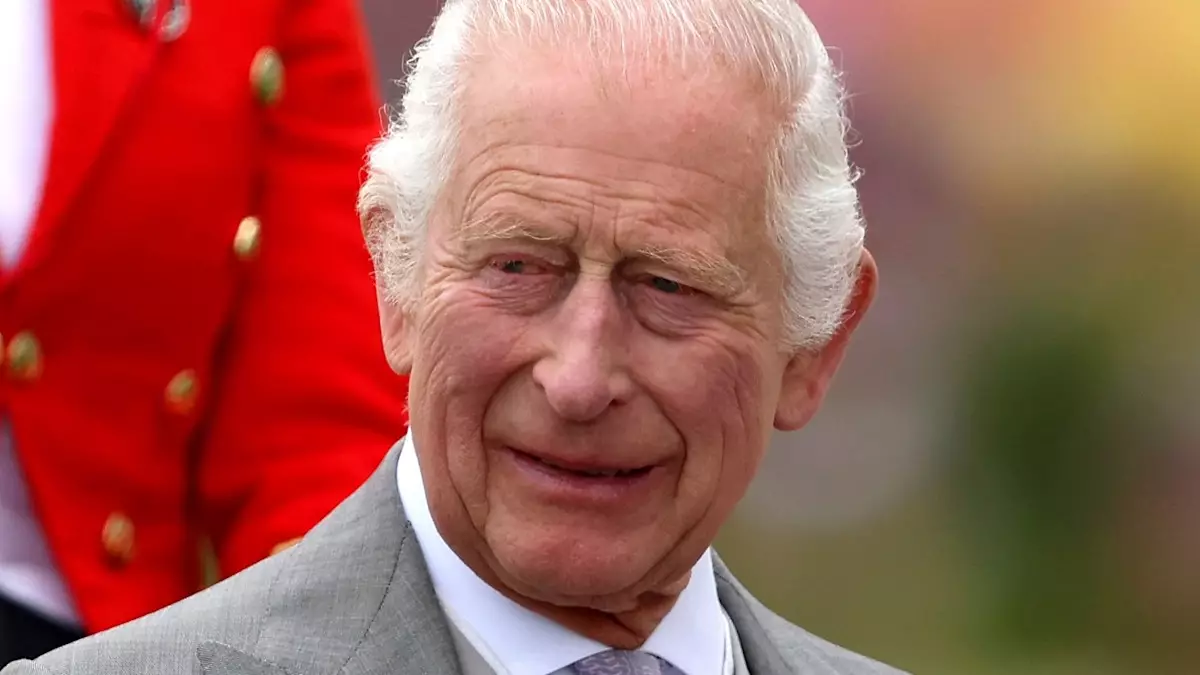The State Banquet held for the visiting Japanese royals was a significant event, not only for the diplomatic relations between the UK and Japan but also for the British Royal Family. Queen Camilla made a bold statement by debuting King Charles’ family order, a portrait traditionally worn by female members of the royal family. This tradition, dating back to the 1820s during the time of King George IV, has typically used ivory for the portrait. However, in a nod to King Charles’ ecological credentials, the portrait was crafted from polymin, a synthetic translucent treated plastic sheet.
The stunning portrait, showcasing the King dressed in military uniform adorned with his medals, was designed by Elizabeth Meek. The 10.41 carats of diamonds surrounding the portrait were sourced from the Royal Collection, adding a touch of elegance and sophistication to the piece. The blue ribbon complementing the portrait was a creation by the Queen’s favourite milliner, Philip Treacy. Although Camilla was the only female royal present at the banquet wearing the new family order, the intricate creation process suggests that other female royals may also have their own portraits for future events.
The decision to move away from ivory for the family order has significant implications. Past family orders, like the one received by the Princess of Wales from the late Queen, have also deviated from traditional materials. This departure highlights a growing awareness of conservation efforts, particularly in Prince William’s work to protect endangered wildlife. Ivory, once a prized material for royal portraits, now symbolizes the harmful effects of the illegal ivory trade on elephant populations worldwide. By opting for a synthetic material, Queen Camilla and King Charles make a powerful statement about their commitment to environmental sustainability.
According to HELLO!’s Royal Editor, Emily Nash, the State Banquet serves as a crucial display of soft power between the UK and Japan. The royal family’s warm welcome to the Emperor and Empress and their delegation emphasizes the strategic partnership between the two nations. By sending the Prince of Wales to escort the royal guests, the UK government underscores the significance of the visit and the positive impact it can have on diplomatic relations.
An Altered State Visit Program
The upcoming general election on 4 July has necessitated adjustments to the State Visit program. Certain aspects, such as the customary Downing Street talks, speeches at the Palace of Westminster, and meetings with opposition leaders, have been omitted due to the focus on campaigning. This modification reflects the sensitivity of the pre-election period and the need to prioritize political engagements over official state functions.
The absence of senior royals like the Princess of Wales and Princess Anne due to health reasons further underscores the challenges faced during the State Visit. Kate’s battle with cancer and Anne’s hospitalization following a concussion serve as reminders of the personal struggles that can impact royal duties. Despite these setbacks, the State Banquet successfully highlighted the unity between the UK and Japan, setting the stage for continued cooperation and diplomatic goodwill.

Leave a Reply